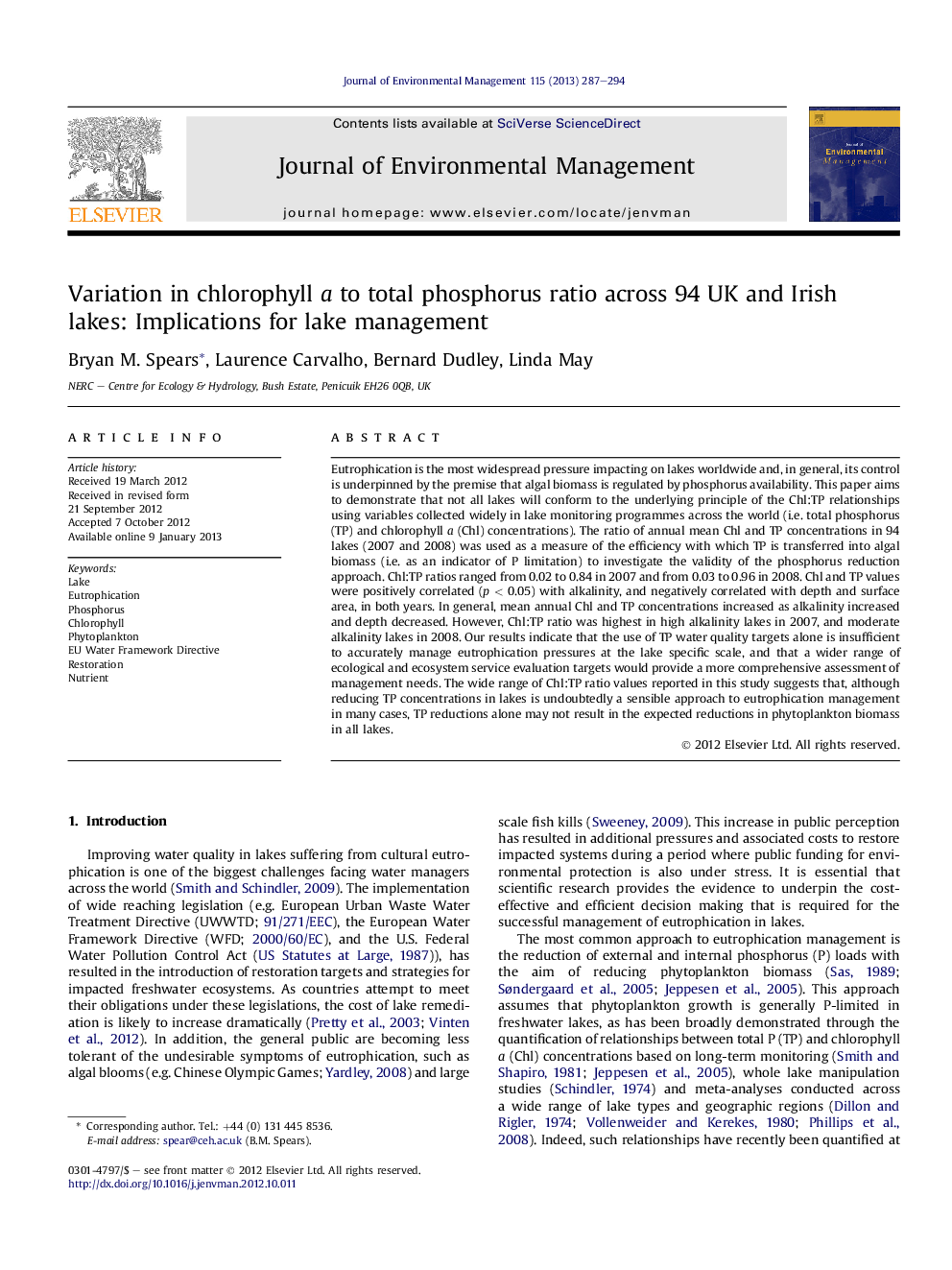| Article ID | Journal | Published Year | Pages | File Type |
|---|---|---|---|---|
| 1056251 | Journal of Environmental Management | 2013 | 8 Pages |
Eutrophication is the most widespread pressure impacting on lakes worldwide and, in general, its control is underpinned by the premise that algal biomass is regulated by phosphorus availability. This paper aims to demonstrate that not all lakes will conform to the underlying principle of the Chl:TP relationships using variables collected widely in lake monitoring programmes across the world (i.e. total phosphorus (TP) and chlorophyll a (Chl) concentrations). The ratio of annual mean Chl and TP concentrations in 94 lakes (2007 and 2008) was used as a measure of the efficiency with which TP is transferred into algal biomass (i.e. as an indicator of P limitation) to investigate the validity of the phosphorus reduction approach. Chl:TP ratios ranged from 0.02 to 0.84 in 2007 and from 0.03 to 0.96 in 2008. Chl and TP values were positively correlated (p < 0.05) with alkalinity, and negatively correlated with depth and surface area, in both years. In general, mean annual Chl and TP concentrations increased as alkalinity increased and depth decreased. However, Chl:TP ratio was highest in high alkalinity lakes in 2007, and moderate alkalinity lakes in 2008. Our results indicate that the use of TP water quality targets alone is insufficient to accurately manage eutrophication pressures at the lake specific scale, and that a wider range of ecological and ecosystem service evaluation targets would provide a more comprehensive assessment of management needs. The wide range of Chl:TP ratio values reported in this study suggests that, although reducing TP concentrations in lakes is undoubtedly a sensible approach to eutrophication management in many cases, TP reductions alone may not result in the expected reductions in phytoplankton biomass in all lakes.
► Variation in chlorophyll a: total phosphorus (Chl:TP) ratio is reported for 94 lakes. ► The Chl:TP ratio increased with increasing alkalinity and decreasing water depth. ► TP water quality targets are insufficient to assess ecological status of individual lakes. ► TP reductions alone will be insufficient to improve ecological status in all lakes.
